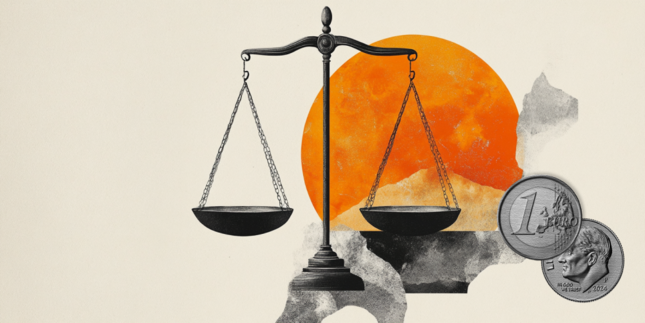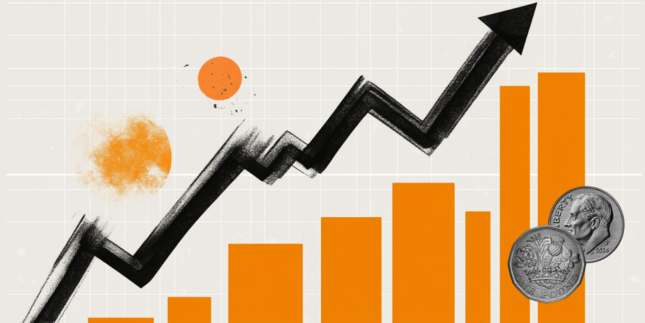- Gold price holds positive ground near $2,410 in Monday’s early Asian session.
- High uncertainty surrounding the US Presidential election tends to be good for gold, a safe-haven asset.
- The first reading of US PMI, Q2 GDP, and June PCE data will influence the yellow metal this week.
Gold price (XAU/USD) attracts some buyers around $2,410, snapping the three-day losing streak during the early Asian session on Monday. The yellow metal edges higher amid the political uncertainty in the United States after the report that US President Joe Biden dropped out of the US presidential race.
On Sunday, US President Joe Biden announced that he will end his reelection bid and will speak to the nation later this week in more detail about his decision. Several experts argued that Biden’s ending of his reelection campaign would increase market volatility. “With uncertainty about who the candidate will be, investors will seek a safe haven until they can assess whether or not the replacement for Biden will continue or break from the high (and possibly higher) tax, more regulation, and more government intervention policies of the Biden administration,” said Peter Earle, senior economist at the American Institute for Economic Research.
Additionally, the worrisome headline in China, the world’s second-largest economy, lifts the precious metal. China's $715 billion hedge fund industry is facing renewed pressure from stricter regulations coming into effect next month, pushing some investment companies to seek additional funding from white knights or even shut shop, according to Reuters. New guidelines for the fragmented industry from August 1 will impose higher asset thresholds for funds to operate, as well as tough investing and marketing rules.
On the other hand, the dovish comments from the Federal Reserve (Fed) policymakers and the increased likelihood of Fed rate cuts in September failed to boost the non-yielding Gold price on Friday. The International Monetary Fund (IMF) said last week that the Fed should not cut interest rates until late 2024. Investors will monitor the US economic data this week. The preliminary US S&P Global PMI and Gross Domestic Product (GDP) for Q2, along with the Personal Consumption Expenditures - Price Index (PCE), will be in the spotlight this week. The stronger-than-expected readings could dampen the hope for a Fed rate cut this year and cap the upside for the Gold price.
Gold FAQs
Gold has played a key role in human’s history as it has been widely used as a store of value and medium of exchange. Currently, apart from its shine and usage for jewelry, the precious metal is widely seen as a safe-haven asset, meaning that it is considered a good investment during turbulent times. Gold is also widely seen as a hedge against inflation and against depreciating currencies as it doesn’t rely on any specific issuer or government.
Central banks are the biggest Gold holders. In their aim to support their currencies in turbulent times, central banks tend to diversify their reserves and buy Gold to improve the perceived strength of the economy and the currency. High Gold reserves can be a source of trust for a country’s solvency. Central banks added 1,136 tonnes of Gold worth around $70 billion to their reserves in 2022, according to data from the World Gold Council. This is the highest yearly purchase since records began. Central banks from emerging economies such as China, India and Turkey are quickly increasing their Gold reserves.
Gold has an inverse correlation with the US Dollar and US Treasuries, which are both major reserve and safe-haven assets. When the Dollar depreciates, Gold tends to rise, enabling investors and central banks to diversify their assets in turbulent times. Gold is also inversely correlated with risk assets. A rally in the stock market tends to weaken Gold price, while sell-offs in riskier markets tend to favor the precious metal.
The price can move due to a wide range of factors. Geopolitical instability or fears of a deep recession can quickly make Gold price escalate due to its safe-haven status. As a yield-less asset, Gold tends to rise with lower interest rates, while higher cost of money usually weighs down on the yellow metal. Still, most moves depend on how the US Dollar (USD) behaves as the asset is priced in dollars (XAU/USD). A strong Dollar tends to keep the price of Gold controlled, whereas a weaker Dollar is likely to push Gold prices up.
Information on these pages contains forward-looking statements that involve risks and uncertainties. Markets and instruments profiled on this page are for informational purposes only and should not in any way come across as a recommendation to buy or sell in these assets. You should do your own thorough research before making any investment decisions. FXStreet does not in any way guarantee that this information is free from mistakes, errors, or material misstatements. It also does not guarantee that this information is of a timely nature. Investing in Open Markets involves a great deal of risk, including the loss of all or a portion of your investment, as well as emotional distress. All risks, losses and costs associated with investing, including total loss of principal, are your responsibility. The views and opinions expressed in this article are those of the authors and do not necessarily reflect the official policy or position of FXStreet nor its advertisers. The author will not be held responsible for information that is found at the end of links posted on this page.
If not otherwise explicitly mentioned in the body of the article, at the time of writing, the author has no position in any stock mentioned in this article and no business relationship with any company mentioned. The author has not received compensation for writing this article, other than from FXStreet.
FXStreet and the author do not provide personalized recommendations. The author makes no representations as to the accuracy, completeness, or suitability of this information. FXStreet and the author will not be liable for any errors, omissions or any losses, injuries or damages arising from this information and its display or use. Errors and omissions excepted.
The author and FXStreet are not registered investment advisors and nothing in this article is intended to be investment advice.
Recommended content
Editors’ Picks

AUD/USD: Strong resistance lies at 0.6300
The marked sell-off in the US Dollar allowed AUD/USD to regain strong upside traction and reach multi-day highs in the area just below the key 0.6300 barrier at the beginning of the week.

EUR/USD: Bulls need to clear 1.0400 on a convincing fashion
In line with the rest of the risk-associated complex, EUR/USD managed to regain marked buying pressure and flirted with the area of three-week highs around 1.0430 on Monday.

Gold remains focused on all-time highs
Gold stays in positive territory above $2,700 on Monday as the improving risk mood makes it difficult for the US Dollar to find demand. Markets await US President Donald Trump's speech at the inauguration ceremony.

Solana Price Forecast: Are US traders dumping Bitcoin and XRP for SOL?
Solana (SOL) price stabilized near the $250 support level on Monday, having declined 10% from its all-time high over the last 24 hours.

GBP/USD stays defensive below 1.2200, awaits Trump 2.0
GBP/USD struggles to gain traction and trades slightly below 1.2200 in the second half of the day on Monday. Markets' nervousness ahead of US President-elect Donald Trump's inauguration drag the pair lower despite a broadly weaker US Dollar.

Trusted Broker Reviews for Smarter Trading
VERIFIED Discover in-depth reviews of reliable brokers. Compare features like spreads, leverage, and platforms. Find the perfect fit for your trading style, from CFDs to Forex pairs like EUR/USD and Gold.